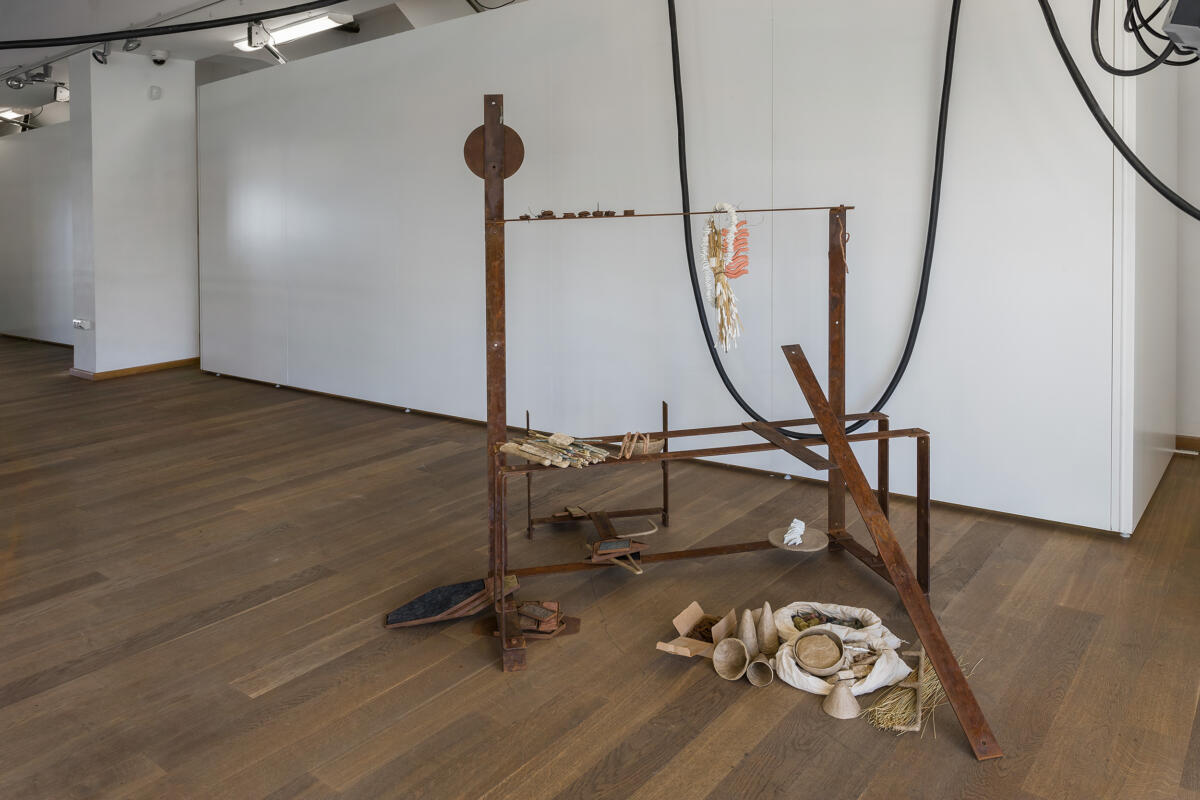[EN/PL] ‘Disturbances and Multiplicities’ by Iza Tarasewicz at PGS Gallery
[EN]
From 16 October until 22 November 2020, the State Gallery of Art in Sopot presents Disturbances and Multiplicities, a solo exhibition by Iza Tarasewicz featuring highlights from the last decade of her idiosyncratic art production. Drawing inspiration from the philosophy of atomism, information theory, biology, quantum physics, and chaos theory, her sculptures and installations often take the form of modular, mobile, and reconfigurable systems that are adjusted according to the spaces in which they are displayed. Working from her home in a small village in Podlasie, Tarasewicz utilizes rural logics and humble materials to invoke communal exchanges of energy and labor between humans and their environments. By organizing material information, she explores forms of survival and making sense in an increasingly chaotic world.
With the unprecedented situation of COVID-19, impending environmental disaster, war, and the eruption of mass demonstrations, our world today is in a state of constant turmoil and precarity. The exhibition Disturbances and Multiplicities addresses these dynamics of disruption and order by emphasizing the roles that noise, turbulence, and the spontaneous assembly of the multitude play in our social, ecological, and formal systems.
Using raw and ready-at-hand materials, Tarasewicz’s artworks test out group dynamics, arranging collections of forms within an interface to model relations. The repetition and aggregation of elements provoke a sensitivity to moments of disequilibrium, revealing where a system breaks down and confusion gathers and self-organizes. Her practice encourages us to consider how production and relationships are organized across scales, connecting the economic, biological, political, and social world to the molecular and the cosmic.
The centerpiece of the exhibition is an 800-meter-long loop of black silicone rope that drapes from the ceiling and crisscrosses throughout the exhibition space. Its title, Arena III, refers to ancient enclosures where events would take place: the amphitheater, the stadium, and the marketplace, the first stages of politics, recreation, performance, debate, and collectivity. In 2018, this work was wrapped around the venerated building of the Zachęta National Gallery of Art in Warsaw, provocatively declaring the museum as a site for public discussion. Here, the massive circle is brought from the outside in to produce a soft and fluctuating architecture akin to a dense jungle of vines or a giant intestinal track. The monumental liana is an instrument for mark-making, for bounding entities together and dividing. This three-dimensional drawing traces a route of loops and twists, generating an abstract choreography for the eye and the body, and framing the rest of the exhibition.
A key component of the exhibition is a selection of preparatory drawings and a series of hanging assemblages made of entangled nets and dense forests of delicate metal rods. These works chart relations and linkages within a matrix, accentuating the importance of noise and multiplicity in communication. Spontaneous and improvised as if tracing out a thought process, the compositions are diagrams of possible architectures and recall the role of repetition in folk traditions. This connection of the handheld to the monumental is also present in a photographic series and other objects that model parallels between cellular, social, agricultural, and celestial interactions.
A set of oxidized steel display apparatuses and wall-mounted reliefs organize cluttered information. Appearing as a form of outdoor shelving or almost as rusted rudimentary spacecrafts, the machines collate and display inventories of base materials such as plant fiber and iron oxide color pigment. The aggregates produce multicolored formations that are at once abstract and familiar, displaying principals of fusion and fission. Information is embedded in these combinations of materials, which are metabolized and organized within a productive system. At the margins and boundaries of the exhibition space, yellow ochre pigment accumulates like dust. Titled Yellow Coal, this installation references a short story by the Polish-Ukrainian author Sigizmund Krzhizhanovsky, where a society channels bad feelings, anger, suffering, and negativity into a limitless energy resource. Iza Tarasewicz’s practice invokes this reframing of bodily and ecological economics through technologies of preparation, distribution, and connection. She mobilizes a functionality of abstraction to make visible the inventiveness of life to harness and accommodate dynamic, uncertain, and destructive forces. For the exhibition Disturbances and Multiplicities, we will consider how such experiments in organizing the noisy masses can help us imagine a reordering of our world.


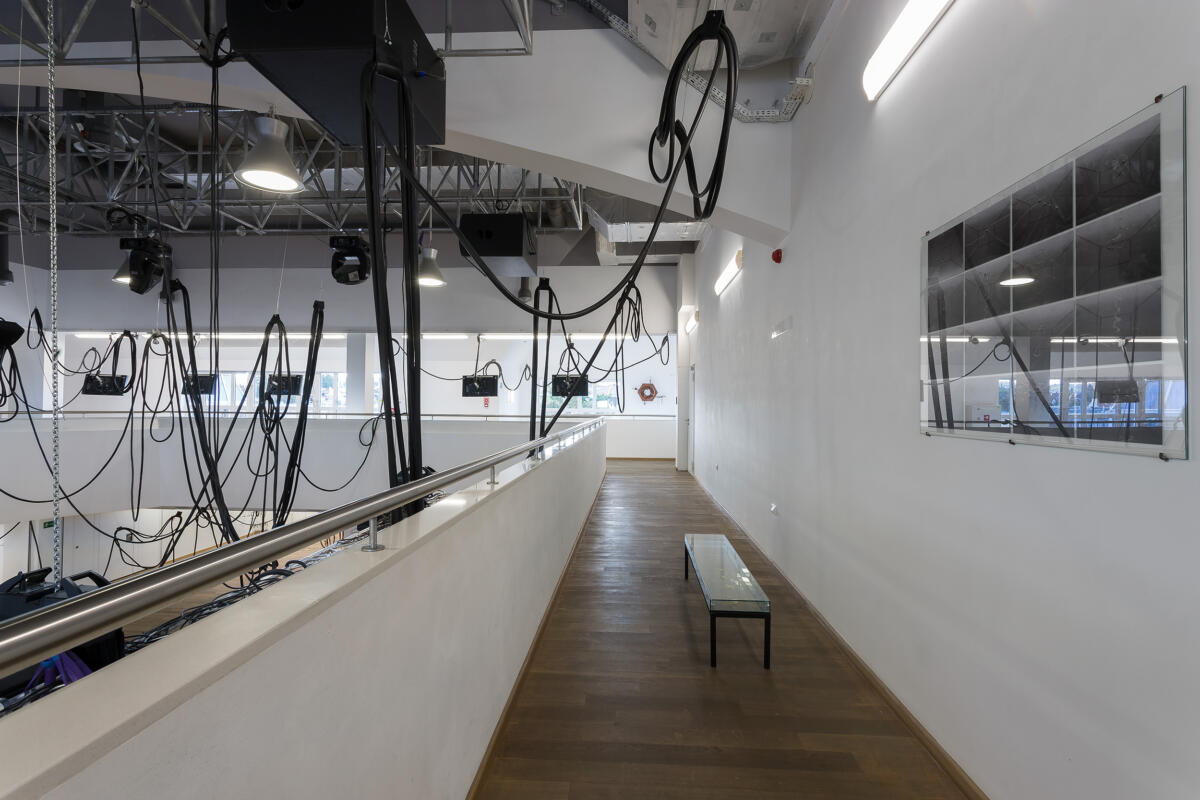

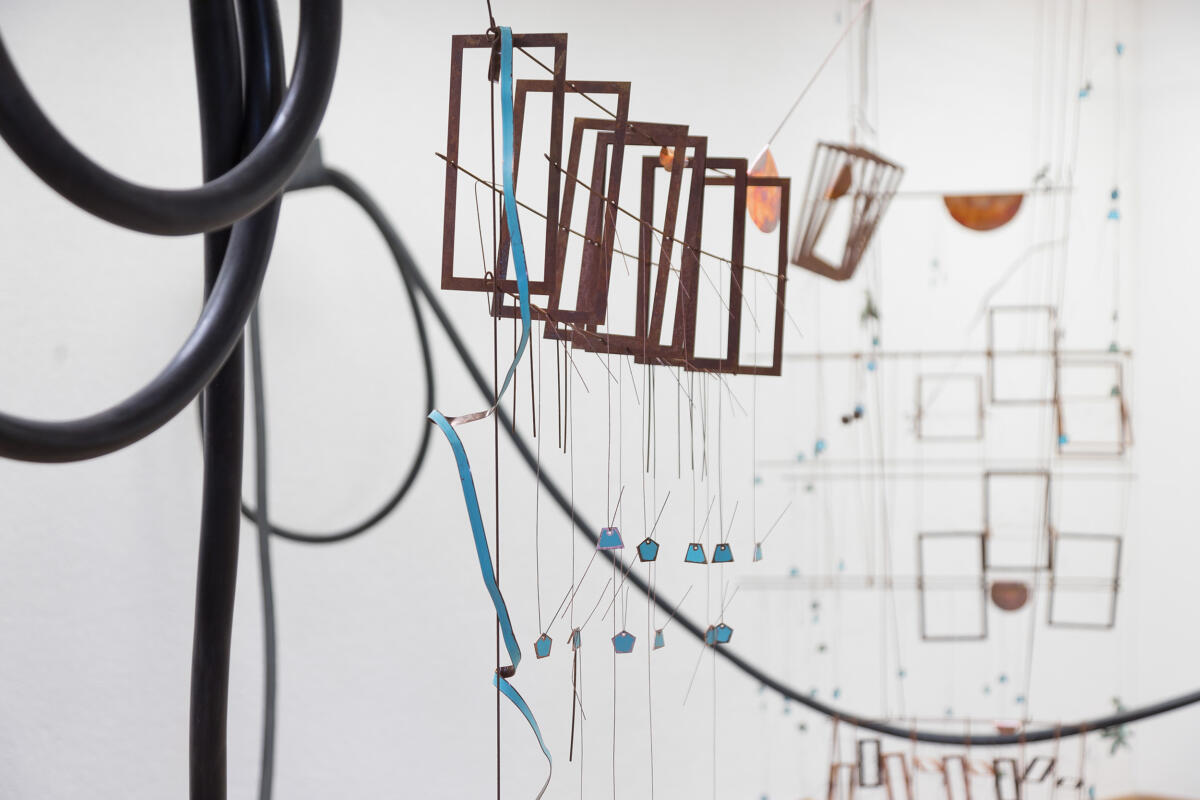
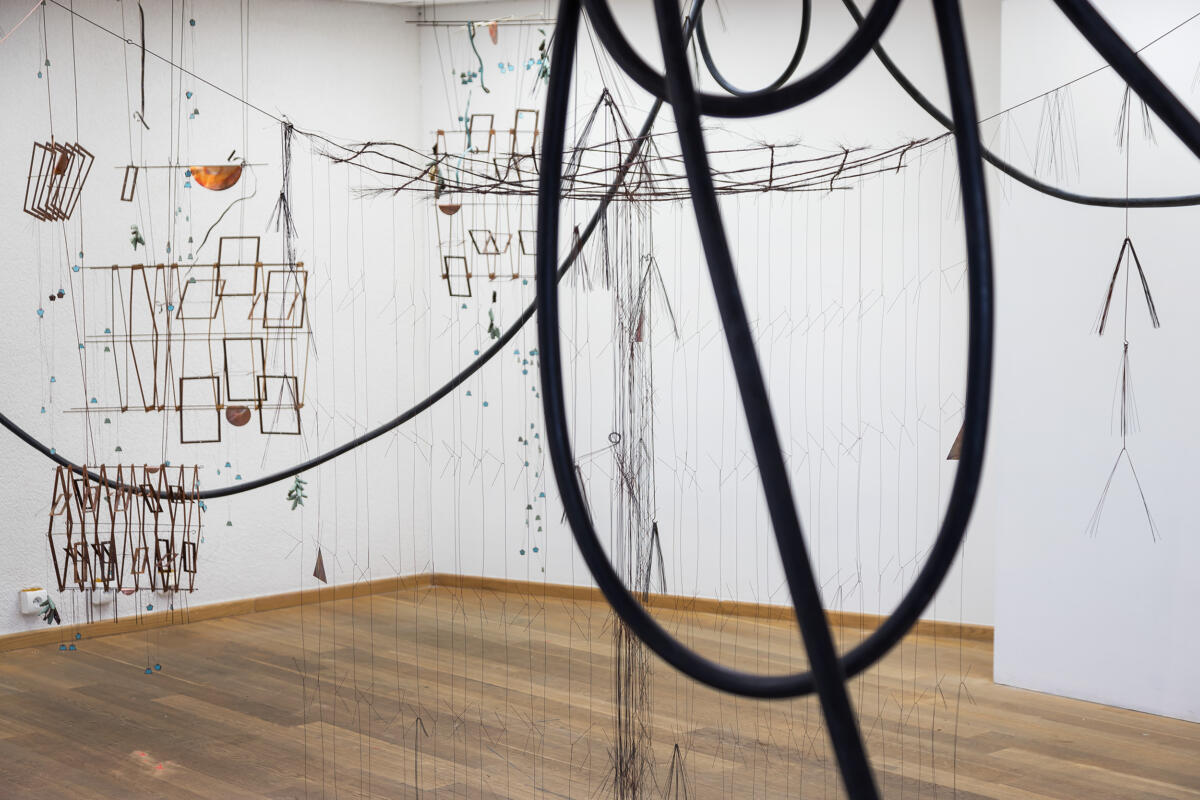
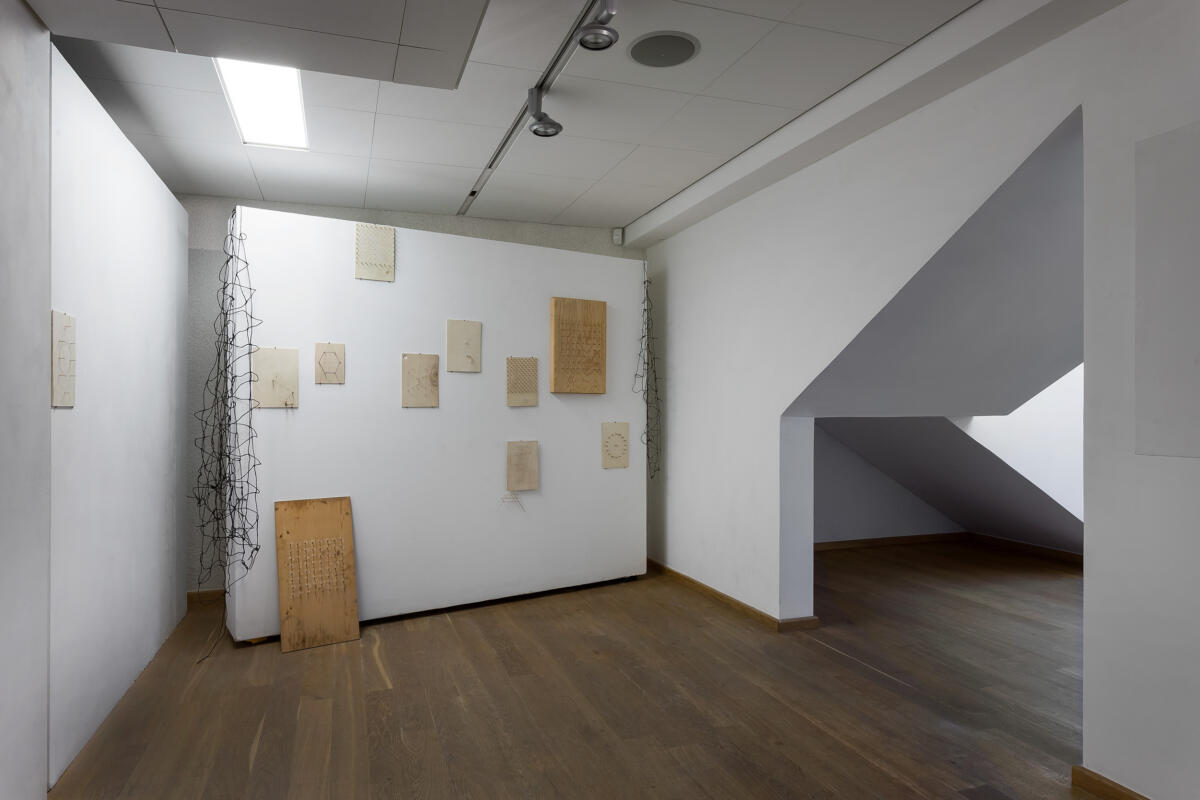
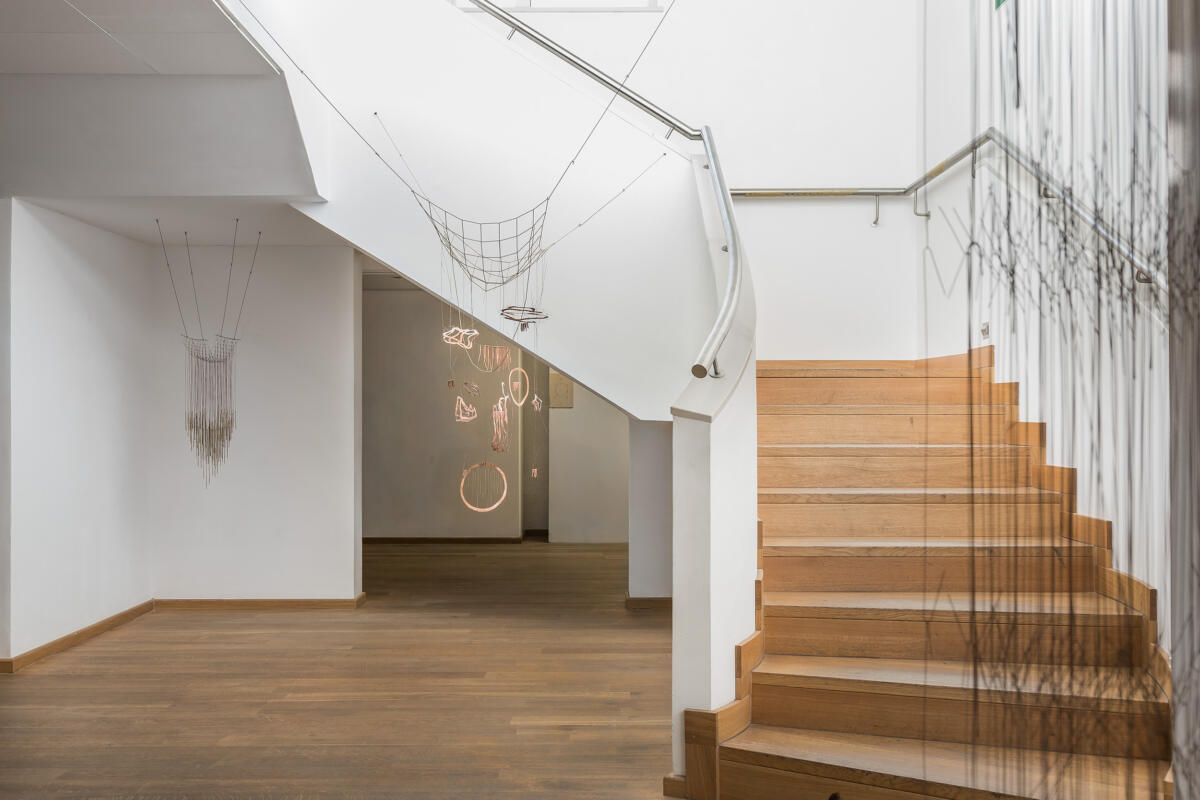
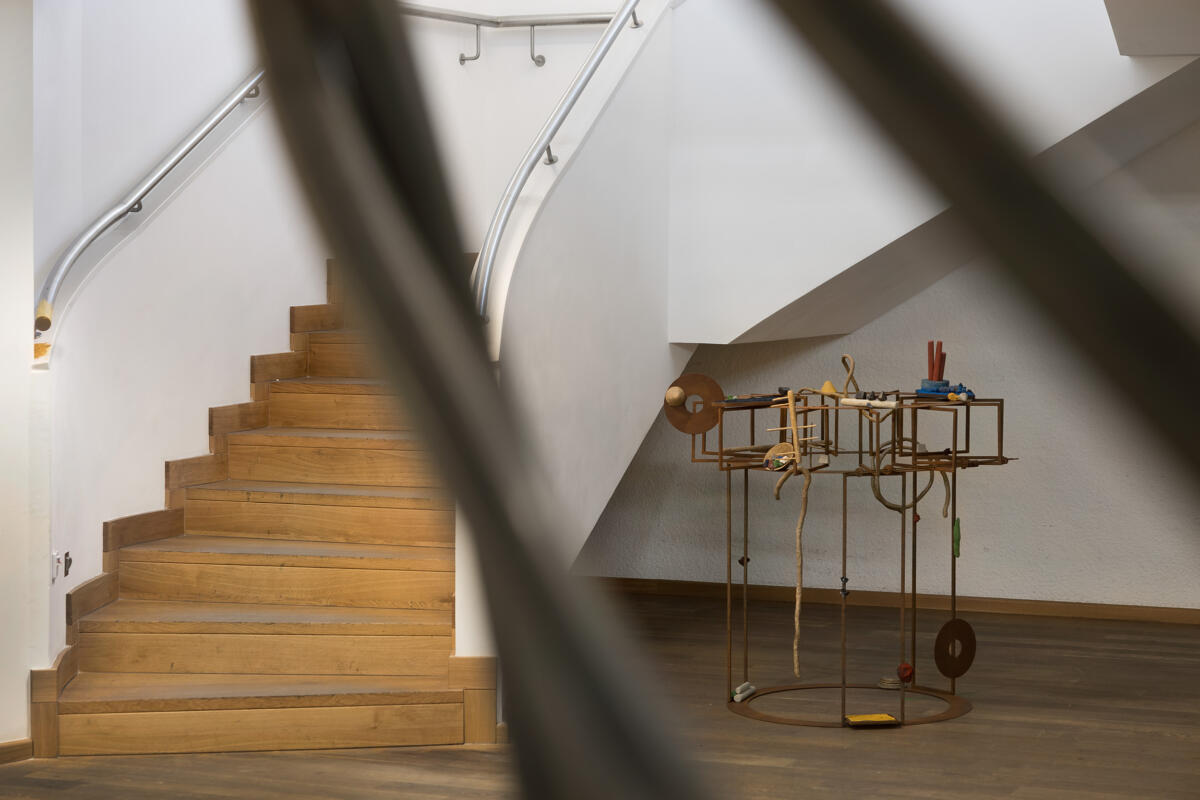

[PL]
W okresie od 16. października do 22. listopada 2020 r. Państwowa Galeria Sztuki w Sopocie prezentuje wystawę indywidualną Izy Tarasewicz pt. Zakłócenia i wielokrotności. Na wystawie znajdą się prace z ostatniej dekady idiosynkratycznej twórczości artystki. Czerpiąc inspirację z filozofii atomizmu, teorii informacji, biologii, fizyki kwantowej i teorii chaosu, Tarasewicz tworzy rzeźby i instalacje, które często przybierają formę modularnych, mobilnych i rekonfigurowalnych systemów dostosowanych do przestrzeni ekspozycyjnych. Pracując w swoim domu w małej podlaskiej wsi, odwołując się do wiejskiej logiki i wykorzystując skromne materiały, Tarasewicz ukazuje wymianę energii i pracy pomiędzy ludźmi i ich otoczeniem. Organizując informacje materialne, bada formy przetrwania i nadawania sensu w coraz bardziej chaotycznym świecie.
W związku z bezprecedensową sytuacją COVID-19, zbliżającą się katastrofą ekologiczną, wojną i erupcją masowych demonstracji, nasz świat znajduje się dziś w stanie ciągłego chaosu i niepewności. Wystawa Zakłócenia i wielokrotności odnosi się do tej dynamiki zaburzenia i porządku, podkreślając role, jakie w naszych systemach społecznych, ekologicznych i formalnych odgrywają hałas, turbulencje i spontaniczne gromadzenie się tłumu.
Wykorzystując surowe i gotowe do użycia materiały, Tarasewicz tworzy prace testujące dynamikę grupy i zestawiające zbiory form w obrębie powiązań modelowych. Powtarzanie i zagęszczanie elementów uwrażliwia odbiorców na momenty zachwiania równowagi, ujawniając, gdzie system ulega dezintegracji, a zamieszanie łączy i samoorganizuje. Twórczość artystki zachęca do refleksji nad organizacją produkcji i relacji w różnych skalach, łącząc świat ekonomiczny, biologiczny, polityczny i społeczny z poziomem molekularnym i kosmicznym.
Centralnym elementem wystawy jest 800-metrowa pętla czarnej liny silikonowej, która opada z sufitu i przecina całą przestrzeń wystawy. Tytuł tej pracy, Arena III, jest odniesieniem do znanych ze starożytności miejsc istotnych wydarzeń – amfiteatrów, stadionów czy rynków – pierwszych scen działalności politycznej, rozrywki, działań performatywnych, debat i wspólnych zgromadzeń. W 2018 r. praca ta oplotła szacowny budynek Zachęty – Narodowej Galerii Sztuki w Warszawie, przewrotnie anektując przestrzeń muzeum na arenę debaty publicznej. Podczas obecnej wystawy ten olbrzymi krąg został przeniesiony do wewnątrz, gdzie tworzy miękką i zmienną strukturę przypominającą gęstwinę winorośli lub gigantyczne jelita. Monumentalna liana jest instrumentem do tworzenia znaków, do łączenia i dzielenia bytów; trójwymiarowy rysunek pętli i skrętów generuje abstrakcyjną choreografię dla oka i ciała, stanowiąc jednocześnie ramy wystawy.
Kluczowym elementem wystawy jest wybór rysunków przygotowawczych oraz seria wiszących asamblaży wykonanych z zaplątanych sieci i gęstych lasów delikatnych metalowych prętów. Prace te wyznaczają relacje i powiązania w obrębie matrycy, podkreślając znaczenie hałasu i wielości w komunikacji. Spontaniczne i improwizowane kompozycje, wydające się być odbiciem procesu myślowego, są schematami możliwych architektur i przypominają o roli powtórzeń w tradycjach ludowych. Ten związek tego, co da się schować w dłoni z monumentalnością obecny jest również w serii fotografii oraz w innych obiektach, będących odbiciem interakcji komórkowych, społecznych, rolniczych i kosmicznych.
Zespół przyrządów wystawowych ze stali oksydowanej oraz reliefy naścienne organizują bałagan informacyjny. Podobne do regałów zewnętrznych lub zardzewiałych pierwszych statków kosmicznych, przyrządy te stanowią inwentarz materiałów bazowych, takich jak włókna roślinne i barwnik tlenku żelaza. Z kruszyw powstają wielobarwne formacje, jednocześnie abstrakcyjne i znajome, ukazujące podstawowe zasady syntezy i rozszczepiania. Informacja jest osadzona w tych kombinacjach materiałów, które są metabolizowane i organizowane w ramach systemu produkcyjnego. Na marginesach i granicach przestrzeni wystawienniczej gromadzi się, niczym pył, żółty pigment ochrowy. Instalacja zatytułowana Żółty węgiel odwołuje się do opowiadania pod tym samym tytułem autorstwa Zygmunta Krzyżanowskiego, ukraińskiego pisarza polskiego pochodzenia. W opowiadaniu tym niewyczerpalnym źródłem energii dla świata okazują się być złość, cierpienie, nieżyczliwość i draństwo. Twórczość Izy Tarasewicz ukazuje rekonfigurację ekonomii ciała ludzkiego i ekologii poprzez technologie przygotowania, przekazywania i połączenia. Artystka mobilizuje funkcje abstrakcji, aby uwidocznić inwencję życia polegającą na okiełznaniu i podporządkowaniu dynamicznych, niepewnych i destrukcyjnych sił. Wystawa Zakłócenia i wielokrotności ukaże, jak podobne eksperymenty organizacji głośnych zbiorowości mogą pomóc wyobrazić sobie reorganizację naszego świata.
Imprint
| Artist | Iza Tarasewicz |
| Exhibition | Disturbances and Multiplicities |
| Place / venue | PGS, Sopot, Poland |
| Dates | 16 October – 22 November 2020 |
| Curated by | Post Brothers |
| Photos | Momasz Maryks |
| Website | pgs.pl |
| Index | Iza Tarasewicz PGS Gallery Post Brothers |




